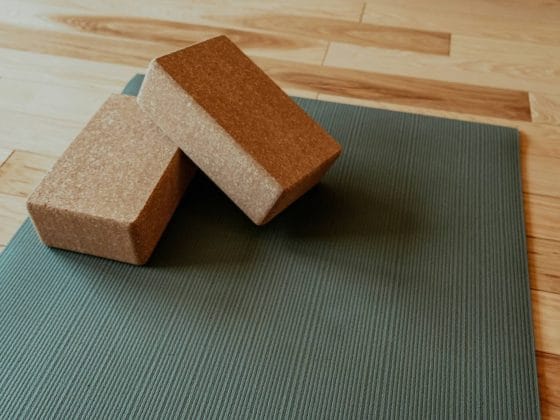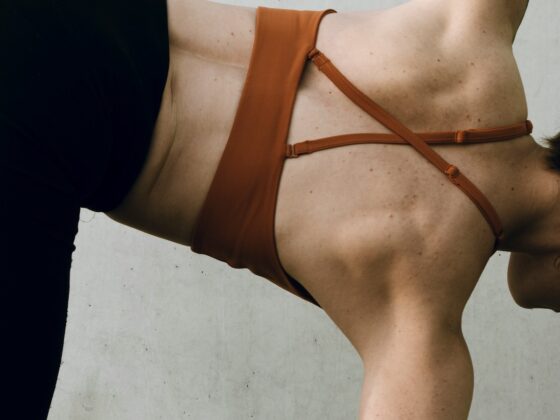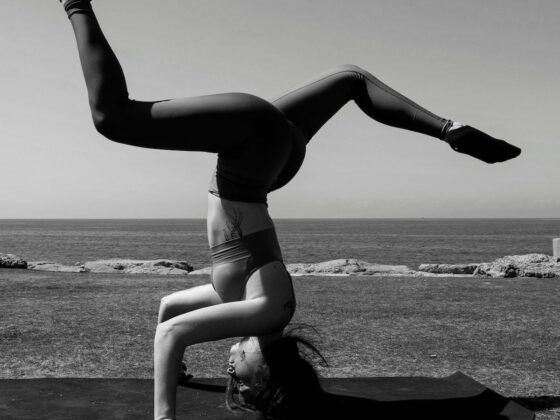Embarking on the transformative journey of yoga, I quickly realized that the practice extends beyond the mat and permeates every facet of our being. As someone who has traversed this path, I’ve come to recognize that understanding the anatomical foundations of yoga is not merely a choice but a key to unlocking the full potential of this ancient discipline. If you’re interested to learn about the benefits of learning yoga anatomy and how it’s transformed my personal practice – keep reading.
My Journey with Yoga Anatomy
At the core of a fulfilling yoga practice lies the empowerment that arises from knowing your own body. Learning about yoga anatomy was like acquiring a map that guided me through the diverse landscapes of my physical form. It became a journey into the inner workings of muscles, bones, and joints – providing profound insights into how my body moves, supports, and rejuvenates itself through the practice of yoga.
Anatomy became my ally, empowering me to make informed choices about my practice – ensuring that each movement served a purpose. It transformed the yoga mat into a sanctuary where the synergy of body and breath was not only felt but understood. This heightened awareness catalysed a deeper connection with myself, elevating my practice from a series of postures to a holistic exploration of body, mind, and spirit.
10 Benefits of Learning Yoga Anatomy
1. Injury Prevention
In my journey, I discovered the often-overlooked role of yoga anatomy in injury prevention. Armed with anatomical knowledge, I became a skilled navigator, steering clear of potential injuries. Understanding the limitations and capacities of my body became a safeguard against incorrect alignment or overexertion (which, if you didn’t know, is the reason many of us get hurt through yoga).
Delving into the intricacies of yoga anatomy equipped me with the tools to listen to my body more attentively. It became a shield against the temptation to push beyond my limits, fostering a practice that is both sustainable and nurturing. In this light, the study of anatomy became a cornerstone for cultivating a yoga practice that not only heals but also fortifies my body against the rigors of daily life.
2. Aligning the Body and Breath
Yoga, for me, is a union of the physical and the spiritual – a harmonious dance between my body and breath. Learning about yoga anatomy unravelled the secrets of this alchemy, illuminating the intricate interplay of muscles, bones, and breath in each asana. It transformed my practice from a series of external postures to an internal exploration of alignment and balance.
Understanding the anatomical nuances of each pose allowed me to refine my alignment, enhancing the efficacy of my practice. It became a journey into the subtleties of engagement, extension, and release – a symphony where my body became an instrument finely tuned through the knowledge of anatomy.
3. Elevating Mindfulness
At the heart of yoga is mindfulness – a state of heightened awareness that transcends the physical realm. Learning about yoga anatomy became a gateway to deepening my mind-body connection. As I explored the inner landscape of my body, I cultivated a mindfulness that extended beyond the mat into every moment of my life.
Anatomy served as a bridge between the tangible and the intangible, anchoring mindfulness in the physical sensations of my body. It became a journey that transcended the superficial layers of the practice – inviting me to dive into the rich tapestry of sensations, emotions, and energies that flow through me. In this way, the study of anatomy became a catalyst for a more profound, transformative yoga experience.
4. Deeper Understanding of Muscles in Motion
At the heart of every yoga pose lies the engagement and release of muscles. Understanding the anatomy of muscles became akin to unlocking the secret language of my body. Delving into the mechanics of muscle groups involved in different poses allowed me to tailor my practice to target specific areas, fostering strength, flexibility, and balance with precision.
For example, the engagement of the quadriceps in standing poses not only stabilizes the knee joint but also activates the entire leg, creating a foundation for groundedness. Similarly, the elongation of the spine in forward bends involves a delicate interplay of muscles along the back, enhancing flexibility and promoting a sense of release.
5. Awareness of Bones and Joints
Bones and joints serve as the architectural blueprint of the body, influencing alignment and balance in every pose. Learning about the anatomy of bones and joints provided me with insights into the optimal alignment for each pose, minimizing strain and maximizing the benefits. Understanding the mechanics of the hip joint significantly impacted the execution of hip-opening poses, fostering both safety and depth.
Additionally, exploring the spine’s anatomy unveiled its role as the central axis, influencing the flow of energy throughout the body. This knowledge became a guiding force, allowing me to create a harmonious balance between stability and flexibility – fundamental to a sustainable and transformative yoga practice.
6. Personalized Sequencing
Anatomy empowered me to craft personalized sequences tailored to my unique needs and goals. Whether aiming to build strength, enhance flexibility, or cultivate balance, the knowledge of muscles and joints enabled the creation of sequences that targeted specific areas. This personalized approach transformed my practice from a one-size-fits-all routine to an intimate, transformative journey that resonated with my individual needs.
7. Improved Ergonomics and Posture
Anatomy played a pivotal role in maintaining optimal posture and ergonomics, both during yoga practice and daily activities. Awareness of spinal alignment, muscle engagement, and joint positioning extended to sitting at a desk, lifting objects, or even standing in line. This mindful integration promoted a healthier relationship with my body, preventing chronic issues associated with poor posture.
8. Better Stress Management
The breath-body connection, a fundamental aspect of anatomy, became a potent tool for managing stress. Integrating conscious breathing into daily life – during moments of tension, in traffic, or during work breaks – served as a calming force. The anatomical understanding of the breath’s impact on the nervous system became a practical resource for navigating the challenges of a hectic lifestyle.
9. Improved Emotional Well-being
Yoga anatomy unveiled the interconnectedness of physical and emotional well-being. As I deepened my awareness of my body’s responses to stress and emotions, I cultivated a sense of emotional intelligence. This heightened awareness became a compass for navigating the complexities of daily life – fostering resilience and emotional equilibrium.
10. Be A Better Teacher
As a yoga teacher, the integration of anatomy into teaching became an art form. Guiding students with clarity and precision, rooted in anatomical knowledge, enhanced the transformative potential of their practice. If you are a yoga teacher or an aspiring teacher, I highly recommend diving into the world of anatomy. You will create a depth of understanding for your students that will deeply transform their lives on a whole.
In Summary
As I reflect on the transformative power of learning yoga anatomy, it’s clear that the benefits extend far beyond the mat, seeping into the very fabric of my life. It’s like a symphony where understanding, practice, and application harmonize to create a journey of self-discovery. From the empowerment of truly knowing my body to preventing injuries, refining alignment, and embracing the profound connection between breath and consciousness, yoga anatomy has become the melody that accompanies me daily.
As a fellow practitioner, I encourage you to dive into this lifelong exploration with the same curiosity and reverence I’ve found. Let the study of yoga anatomy be more than an academic pursuit; let it be a living, breathing experience that deepens your connection with the essence of yoga—a timeless journey towards holistic well-being and self-realization.



